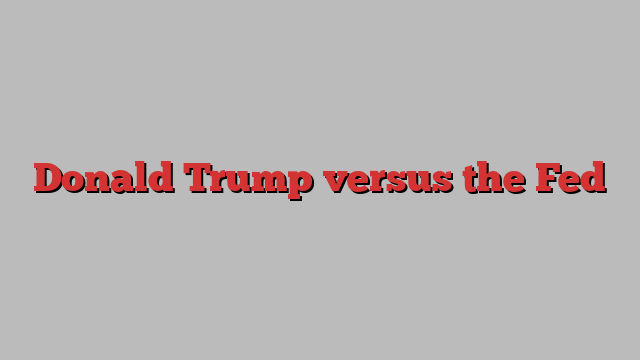
Unlock the US Election Countdown newsletter for free
The stories that matter on money and politics in the race for the White House
The White House and Federal Reserve have not always got along. In 1965, President Lyndon B Johnson reportedly summoned then Fed chair William McChesney Martin to his Texas ranch, and shoved him against a wall, after a decision to raise interest rates. For the most part, however, US presidents have championed the importance of an independent central bank, and have reaped the benefits of economic and financial stability as a result. Investors are not expecting Johnson-levels of antagonism to ever return, but they are concerned that the Fed’s impartiality may not remain intact under a potential second Donald Trump presidency.
In a recent interview Trump ominously said he would “let” chair Jay Powell finish his term, which ends in 2026, “especially if I thought he was doing the right thing”. In April, his team were reported to be drafting proposals that could erode the Fed’s independence if he wins. Trump has form here. Despite nominating Powell to serve as chair in 2017, when he was president, Trump goaded him publicly for not cutting rates faster.
Interfering with central bank independence runs the risk of destabilising American monetary and fiscal credibility. And though Trump shows little regard for economic orthodoxy, tinkering with the Fed is not in his interests either. The next government could inherit a resilient economy and a loosening cycle. Why put that at risk?
In the near term, tensions between Powell and Trump could mount. The Fed, which will meet midweek, is at a sensitive point in its inflation battle. The former president has already suggested that the central bank should not be cutting rates now — perhaps as it may boost support for the Democrats. But, with US inflation edging closer to target — and a cooling jobs market — the Fed will have to start rate cuts before the November election.
Powell is rightly ignoring Trump, even if it gives the Republican nominee more ammunition to undermine the chair, should he come to power. Leaving rates too high, driving more joblessness and sapping demand, is a more important consideration.
If Trump did win in November, it would not be straightforward for him to sack Powell before his term ends. Over time he could, however, nominate more pliant board members to fill any vacancies. Either way, the former president would likely pressure the Fed to cut rates to stimulate the economy. His economic agenda, which includes a pledge to weaken the dollar, also risks complicating the central bank’s job and bringing Trump and the Fed into frequent conflict.
If financial markets believe the Fed’s independence is compromised — or could become so — under Trump, it will have significant ramifications. Inflation expectations could de-anchor, particularly given Trump’s plans to cut taxes and raise tariffs. This would add upward pressure to US Treasury bond yields. America’s debt ratio is on an unsustainable path as it is. Even-higher borrowing costs would further constrain fiscal wiggle-room, add to the debt pile, and hinder economic growth.
The dollar’s role as an international reserve currency means demand for US debt will remain high. But the combination of elevated bond yields, uncertainty over the Fed’s ability to act freely, and an erratic president in power, could create the perfect storm for a destabilising spike or spiralling in yields that could upset US and global financial stability.
As a candidate and, if he wins, as president, Trump should leave the Fed alone. Central bank independence underpins America’s economic and financial stability. Any incoming president should also be eager to build on what is currently a resilient economy, primed for interest rate cuts. Tinkering with the Fed would undermine that, too.